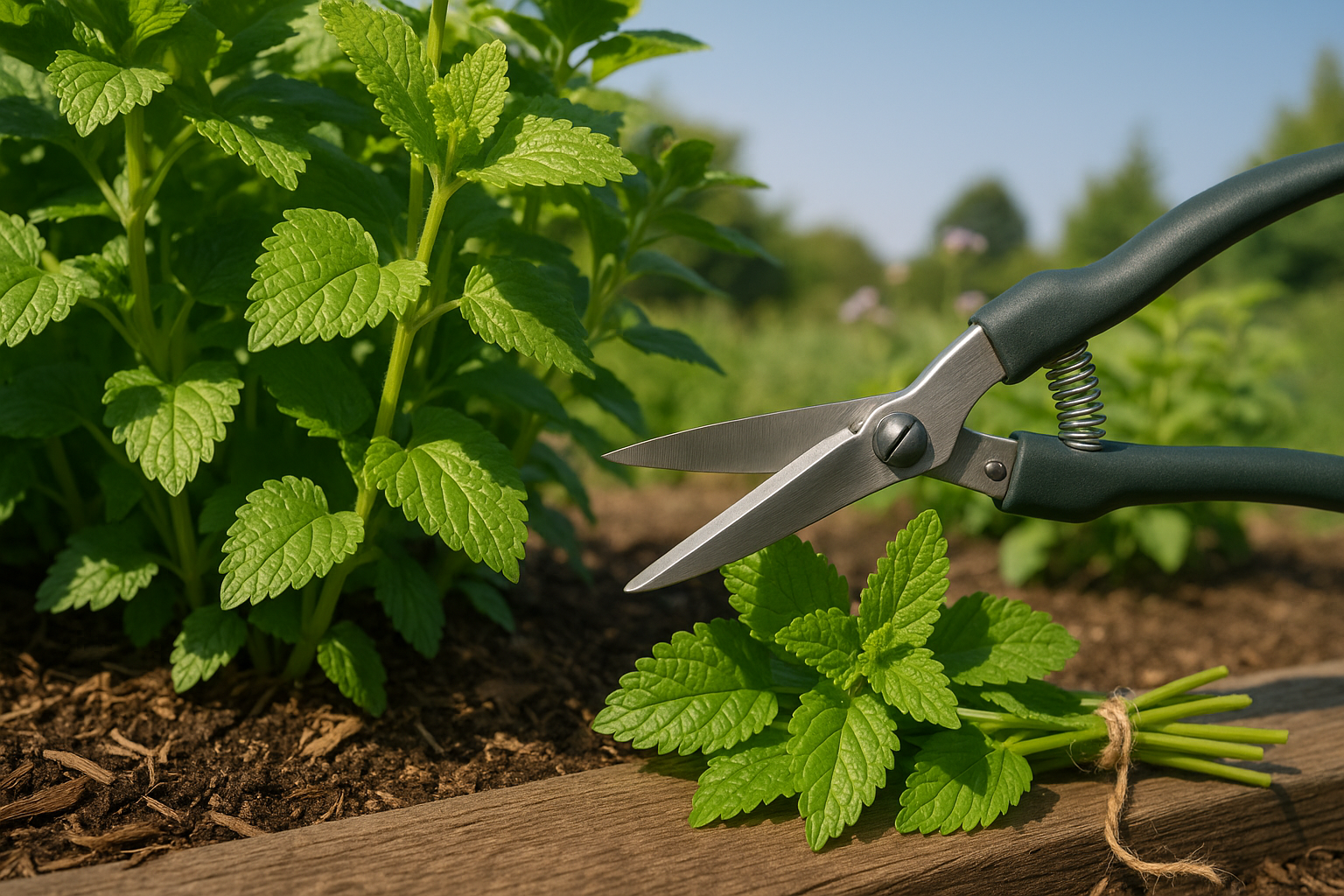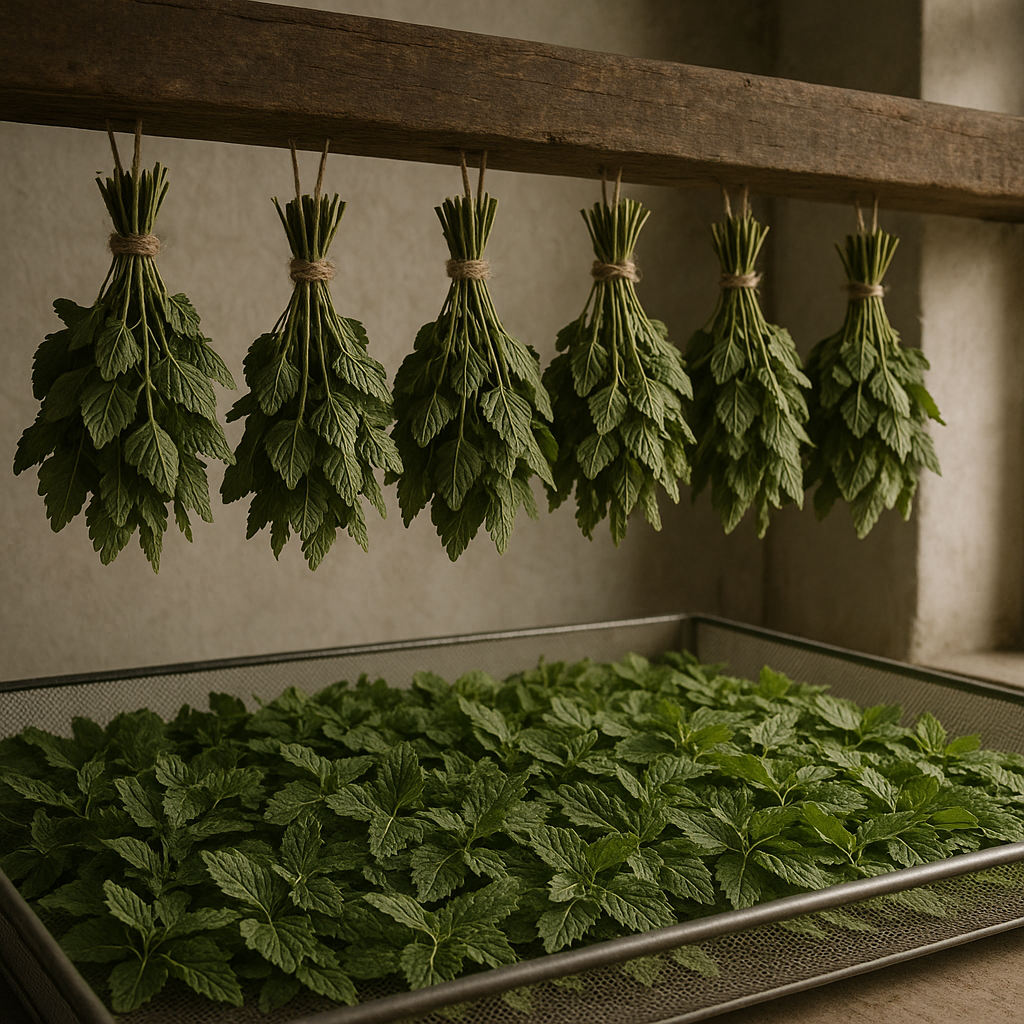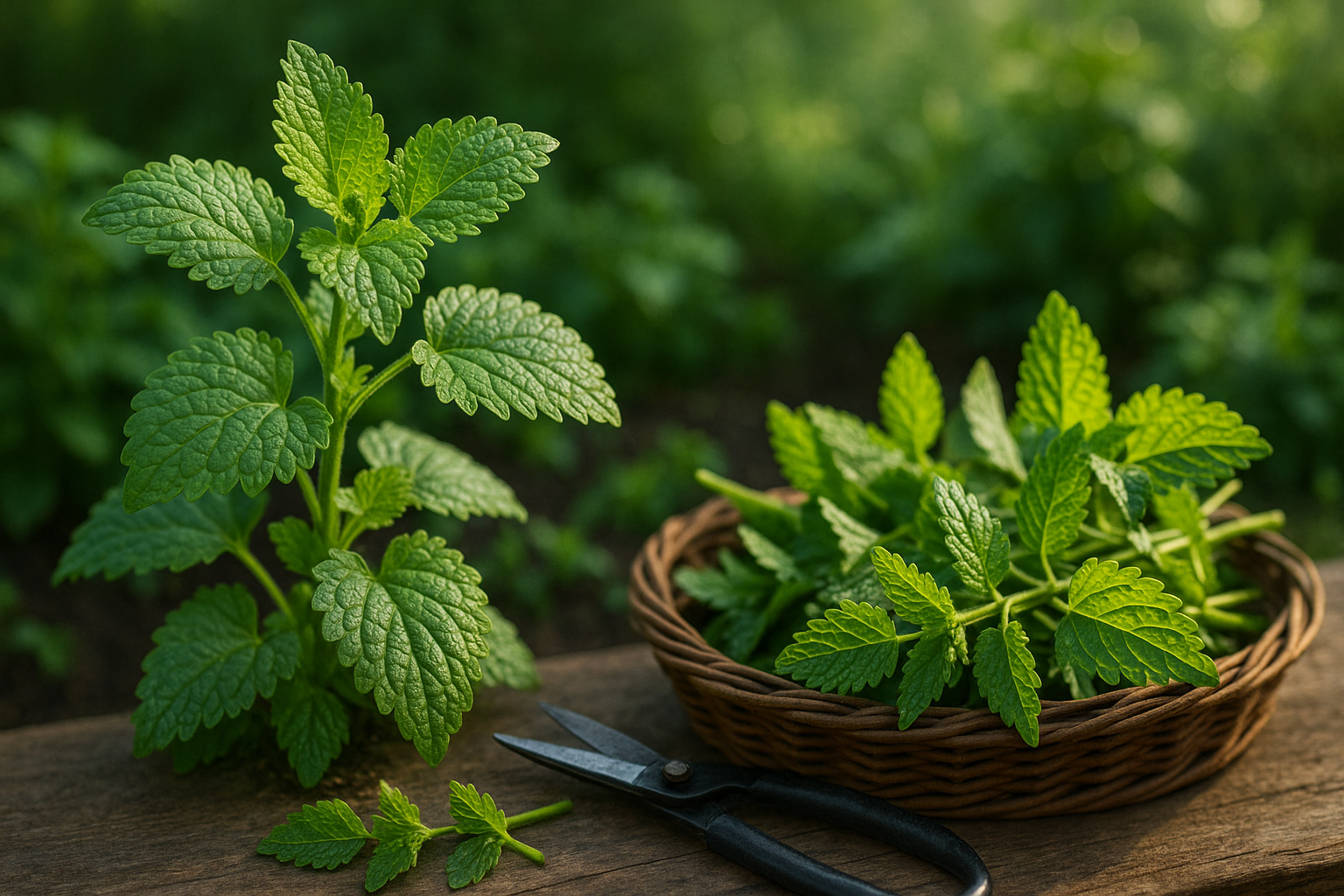Introduction to Harvesting Lemon Balm
Curious about how to harvest lemon balm to get the best from this fragrant herb? Lemon balm, a staple in both culinary gardens and herbal remedies, is beloved for its fresh, citrusy scent and gentle flavor. Its leaves bring a burst of brightness to teas, salads, desserts, and even homemade skincare products, making it a go-to ingredient whether used fresh or dried.
Knowing how to harvest lemon balm correctly means you’ll enjoy vibrant leaves throughout the growing season and have plenty to store for later. In this post, we’ll walk you through simple, proven steps for picking lemon balm at its peak, preparing it for use right away, and drying it for long-lasting flavor and aroma.
Whether you’re new to growing herbs or looking to improve your harvest techniques, you’ll find practical advice you can start using in your own kitchen and garden today.
When and How to Harvest Lemon Balm

The best time to harvest lemon balm is just before the plant flowers, typically from late spring to early summer, when the leaves have the highest concentration of essential oils and flavor. Aim to harvest in the morning after the dew has dried but before the heat of the day, as this is when the oils are at their strongest. Choose a dry day to reduce the risk of mold or mildew on the freshly cut foliage.
Use sharp scissors or garden shears to snip stems about 2-3 inches above a strong set of leaves. This encourages bushier regrowth and helps keep the plant healthy and productive throughout the season.
When harvesting for fresh use, pick only what you need to keep the leaves vibrant. Wash them gently and pat dry before adding to teas, salads, or desserts.
For drying, cut larger bundles, tie the stems together loosely, and hang them upside down in a well-ventilated, shaded spot. Alternatively, spread the leaves out on a mesh screen indoors. This method preserves their flavor and color for months.
Remember to avoid stripping the entire plant—always leave at least one-third of the stems intact so your lemon balm continues to thrive and regrow for repeat harvests. This simple approach ensures a steady supply of fresh or dried lemon balm all season long.
Preparing Lemon Balm After Harvest
After harvesting lemon balm, start by sorting through the bunches and pulling out any leaves that are wilted, yellowed, or damaged—these won’t add flavor and could spoil the rest. Next, place the good leaves and stems in a bowl of cool water, gently swishing them around to remove dirt and any tiny insects. Lift the lemon balm out (instead of pouring out the water) so any grit stays behind. Then, spread the cleaned herbs on a towel and gently pat them dry to remove as much surface moisture as possible.
For the best flavor and convenience, consider separating the leaves from the stems. Leaves are wonderful for teas, salads, or desserts, while stems can lend extra flavor to stocks or infusions.
If you plan to use your lemon balm within a few days, wrap the freshly washed leaves in a slightly damp paper towel and place them in a resealable bag or airtight container in the fridge—this helps maintain freshness and prevents wilting. For whole sprigs, a glass of water on your kitchen counter, just like fresh flowers, can keep them perky for a day or two. Use within a week for the brightest taste and aroma.
How to Dry Lemon Balm Leaves

Drying lemon balm leaves at home is an easy way to preserve their vibrant flavor and aroma for use all year round. There are three popular methods: air-drying, using a dehydrator, or oven-drying, each with its pros and cons.
Air-Drying
Air-drying is the most traditional and energy-efficient option, perfect if you have a dry, warm, and well-ventilated spot. Simply gather small bunches of lemon balm, tie the stems together with string or a rubber band, and hang them upside down in a place out of direct sunlight. Alternatively, you can strip the leaves from the stems and lay them in a single layer on a clean screen or mesh tray. While air-drying can take up to two weeks, it retains the best color and flavor.
Using a Dehydrator
A dehydrator speeds up the process, usually drying leaves in just a few hours at 95°F (35°C). Just spread the cleaned, dry leaves evenly on the trays and check after about an hour for doneness. The downside is that you need special equipment and should monitor closely to avoid over-drying.
Oven-Drying
Oven-drying is a quick fix if you’re short on time. Arrange leaves in a thin layer on a baking sheet, set your oven to the lowest temperature (ideally below 180°F/80°C), and leave the door slightly open to allow moisture to escape. Leaves can dry in 1-2 hours, but be careful, as the heat may dull the flavor and color.
Final Tips for Drying
No matter which method you choose, the leaves are ready when they crumble easily between your fingers and feel papery. To keep that lovely lemony scent, store the dried leaves in airtight containers away from light and heat; glass jars or tins work best. For maximum freshness, only crush the leaves right before use. They’ll add a delightful zing to teas, recipes, and crafts all year long.
Storing and Using Dried Lemon Balm
For the best results when storing dried lemon balm, use airtight glass jars or food-grade containers. These keep moisture out and preserve the delicate oils that give lemon balm its lemony scent and flavor. Always store the jars in a cool, dark, and dry place, such as a pantry or cupboard away from direct sunlight, to prevent the herbs from losing potency or developing mold.
Don’t forget to label each container with the name and date of harvest; this helps you track freshness and ensures you use older batches first. Dried lemon balm typically stays fresh for up to a year, though its flavor and aroma may begin to fade after about six months. Signs that your lemon balm is past its prime include a musty smell, discoloration, or any visible mold—if you notice these, it’s best to discard the batch.
When it comes to using your dried lemon balm, you have plenty of easy options:
- Steep a teaspoon in hot water for a calming herbal tea.
- Sprinkle a pinch over roasted vegetables or grilled fish for a citrusy note.
- Mix it into homemade salad dressings.
- Add dried lemon balm to potpourri.
- Infuse it into oil for a soothing massage blend or DIY skincare products.
Keeping a labeled jar on hand ensures you can add a burst of fresh, lemony flavor or a relaxing aroma to everyday meals and wellness routines with ease.
Creative Ways to Use Fresh Lemon Balm
Fresh lemon balm is a surprisingly versatile herb that adds a bright, citrusy note to a wide range of recipes and home remedies. For drinks, try muddling lemon balm leaves into lemonade, iced tea, or sparkling water for a fragrant twist—mix it with mint or basil for extra depth.
In salads, snip a few leaves over mixed greens or fruit salads, where lemon balm pairs beautifully with strawberries, watermelon, or feta cheese.
For desserts, fold chopped lemon balm into whipped cream, yogurt parfaits, or homemade sorbets; it also works wonders with berries and honey.
In savory dishes, toss whole sprigs into roasted chicken or fish, stir into rice pilaf, or blend with garlic and olive oil for a quick herb sauce—parsley and thyme make great companions here.
Beyond the kitchen, steep fresh lemon balm for a calming herbal tea or create a soothing body oil by infusing it with coconut or olive oil—lavender and chamomile enhance its relaxing properties.
Don’t be afraid to get creative:
- Add it to salad dressings.
- Blend into smoothies.
- Freeze in ice cubes for easy flavor boosts.
Lemon balm’s gentle citrus-mint flavor is mild enough to experiment with, so play around and discover your favorite combinations!
Conclusion & Quick Tips
Harvesting lemon balm is simple—snip healthy stems in the morning when the oils are strongest. Tie small bundles and hang them in a dry, airy spot away from sunlight. Once dry, crush the leaves and store them in airtight containers for teas, cooking, or homemade beauty products.
Growing and using your own herbs like lemon balm brings fresh flavors and soothing aromas to your kitchen all year long. Try adding it to salads or infused water for a burst of citrusy flavor.
Have a favorite way to use lemon balm? Share your tips below or drop any questions—we’d love to hear from you!
